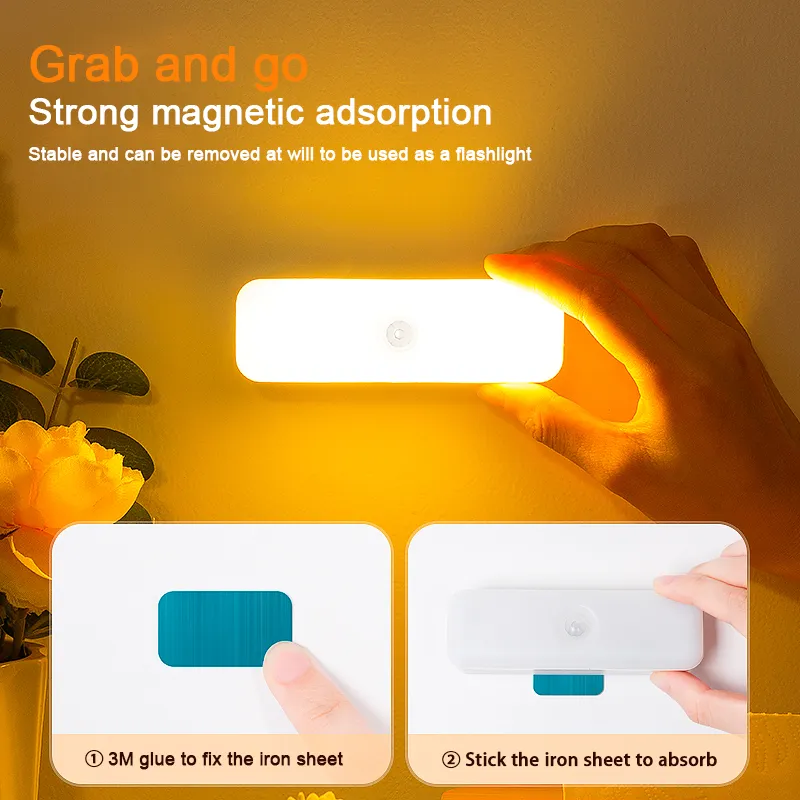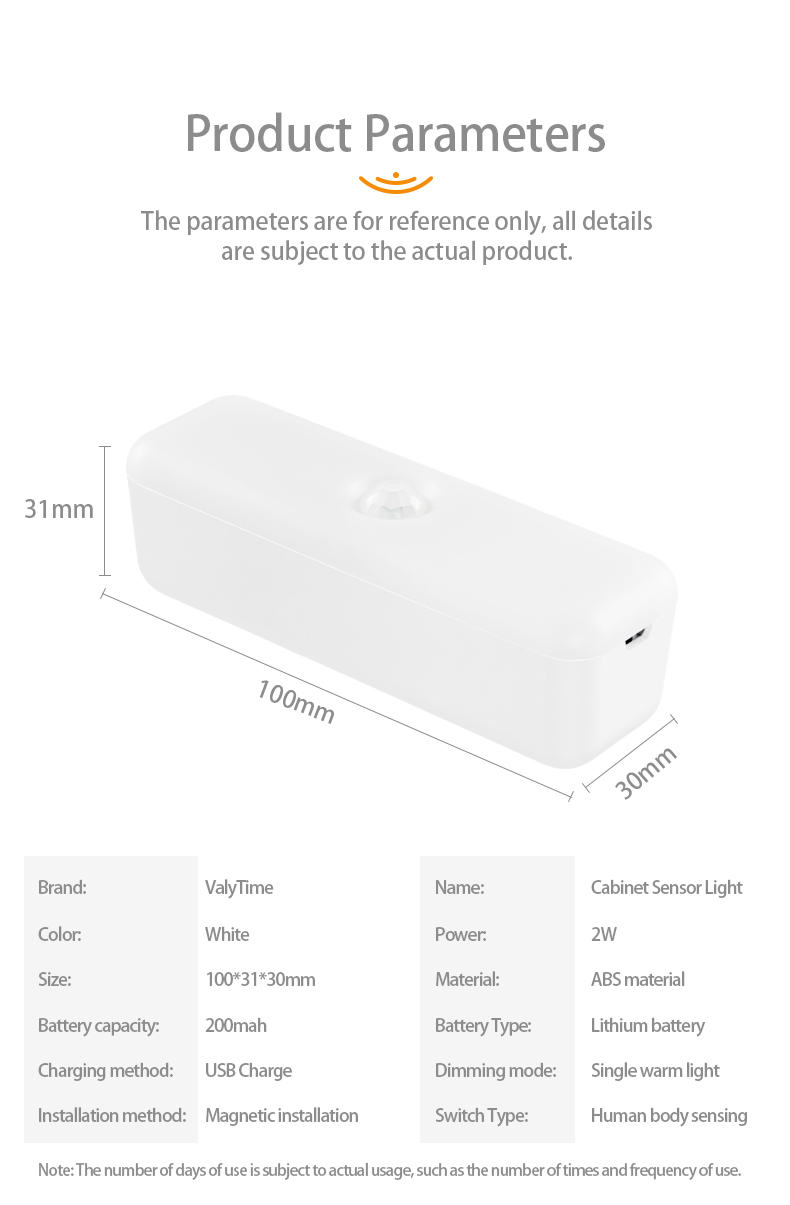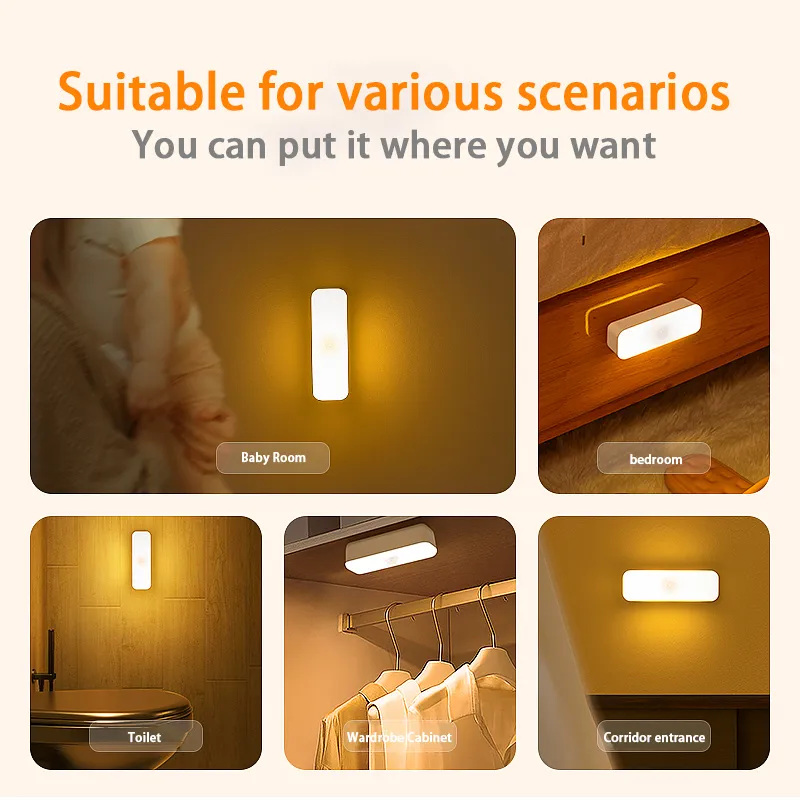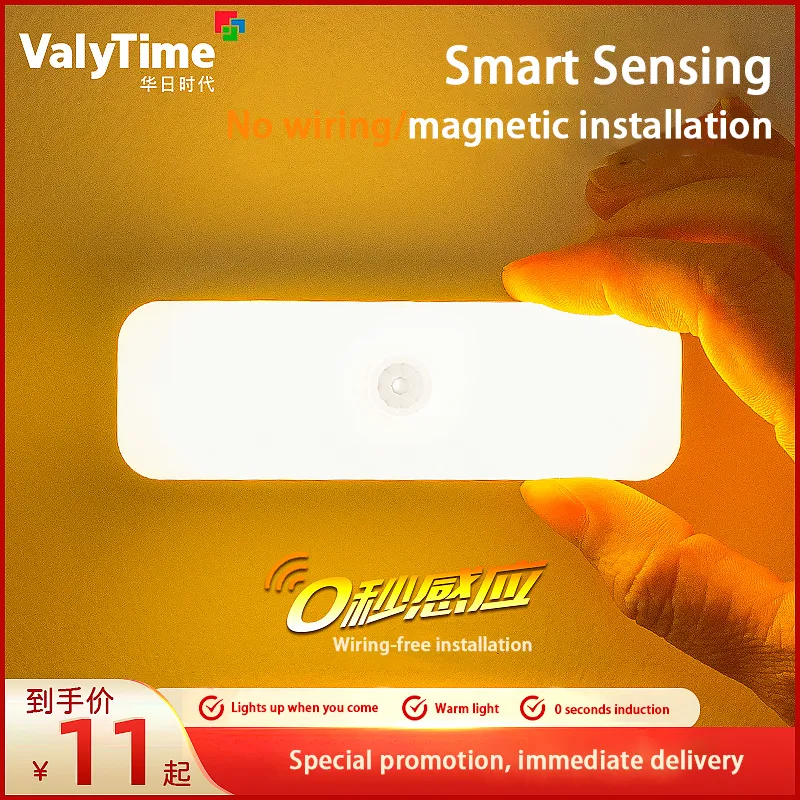Can I cover a motion sensor night light with tape?
With the rise of smart homes, more and more home lighting devices are equipped with motion sensor technology, and motion sensor night lights are a very popular option. They automatically turn lights on and off by detecting human motion, bringing great convenience. However, in some cases, users may wish to temporarily disable the motion sensor's sensing function, such as when they don't want the night light to illuminate due to unwanted movement.
So, can I cover the sensor of a motion sensor night light with tape? What are the effects of this method? Will it affect the normal operation of the light? This article will provide in-depth analysis and professional and detailed answers to these questions.

What is a motion sensor night light?
Before delving into whether or not you can cover a motion sensor with tape, we need to understand the working principles and characteristics of a motion sensor night light.
A motion sensor night light is a lighting device with integrated motion sensing technology. It uses a built-in sensor (such as an infrared sensor or microwave sensor) to detect motion signals from a person or object and automatically turns the light on or off. Generally speaking, motion sensor night lights have high sensor sensitivity, enabling automatic lighting control without manual operation, greatly improving the convenience and safety of nighttime lighting.
• Infrared sensor (PIR): Infrared sensors primarily detect motion by sensing thermal radiation from surrounding objects. Since human bodies often emit heat, infrared sensors are effective at detecting human motion. These sensors are generally sensitive to temperature changes and, therefore, factors such as air flow and temperature differences.
• Microwave sensor: Microwave sensors detect motion by emitting microwaves and detecting the reflected waves. Unlike infrared sensors, microwave sensors have greater penetration and can detect motion at greater distances.

Why cover a motion sensor night light?
For some users, there may be the following scenarios:
• Temporarily deactivating the sensor: Sometimes, users do not want a motion sensor night light to activate under certain circumstances. For example, when a family member does not need the light, or when the light is frequently triggered, users may want to find a way to temporarily deactivate the sensor.
• Preventing false triggers: If small moving objects, such as animals, fans, or curtains, are frequently present in the surrounding environment, they may be mistakenly detected by the sensor as "motion," causing the light to frequently turn on. In this case, users may wish to find a way to prevent the sensor from turning on due to these unnecessary triggers.
• Addressing environmental interference: In some environments, there may be strong air flow or temperature fluctuations. These changes can mislead the infrared sensor and cause the light to turn on unnecessarily.
These situations may lead some users to consider simply covering the motion sensor night light with tape. Because tape is one of the simplest and most common materials in everyday life, it can easily block the sensor's sensing range. So, is this really a good solution?
What are the effects of covering a motion sensor night light with tape?
1. Blocking the sensing area causes the sensor to fail
The core functionality of a motion sensor night light relies on its sensor to detect changes in the surrounding environment. When users cover the sensor with tape, they are effectively limiting its sensing range, preventing it from detecting motion signals. Whether it's an infrared or microwave sensor, blocking its sensor can render it inoperable, preventing the light from automatically turning on or off at the desired time.
For example:
• If the sensor is an infrared sensor, tape blocking its field of view can affect its ability to sense human heat, preventing it from detecting motion.
• If it's a microwave sensor, tape can hinder the reflection and propagation of microwave signals, preventing it from detecting distant motion.
Thus, blocking the sensor's sensing area can disable the automatic sensing function of a motion sensor night light, rendering it ineffective.
2. Potential Impact on Sensor Electrical Performance
Although tape, as a non-conductive material, won't directly cause problems like short circuits, if it covers certain electronic components of the sensor (such as the light-transmitting hole or the sensor's contact points), it can cause unstable sensor operation and even lead to other problems. Dust or dirt on the adhesive surface of the tape can also affect the sensor's sensing accuracy, further increasing the risk of failure.
3. Reduced Device Lifespan
Prolonged sensor coverage not only causes motion sensor night lights to malfunction but can also cause them to overwork under certain conditions, shortening their lifespan. For example, when the sensor doesn't sense motion, the light may remain on for extended periods, wasting energy and potentially shortening the lifespan.
4. Prone to Misoperation
While covering the sensor can temporarily disable the light's sensing function, this approach isn't ideal. Because the sensor is blocked, other users may not be aware of the sensor's inactivity, leading them to mistakenly believe the light isn't functioning properly. Worse still, not every user may notice the sensor is blocked, potentially preventing the light from automatically activating at night.

How to Correctly Address Overactivation of a Motion Sensor Night Light?
While covering the sensor with tape may provide a short-term solution, it's not a reliable and effective solution. For a more effective and long-term solution to the problem of a motion sensor night light activating for no apparent reason, users can try the following methods:
1. Adjusting Sensor Sensitivity
Most motion sensor night lights offer a sensitivity adjustment option, allowing users to adjust the sensor's sensing range and sensitivity based on their needs. Lowering the sensitivity can reduce false triggers, such as from slight movements of a fan or air conditioner.
2. Relocating the Sensor
If the motion sensor night light frequently triggers falsely, consider adjusting the sensor's location. Ensure it's away from objects that could cause false triggers, such as curtains, air conditioner vents, or high-temperature sources. This will reduce external environmental interference with the sensor.
3. Disabling the Sensing Function
Some motion sensor night lights offer a manual on/off switch and a sensing mode switch. If you don't want the sensor to function, simply disable the sensing mode and use only the traditional manual on/off switch. This will prevent frequent false triggers.
4. Choosing the Right Sensing Technology
For users who are sensitive to environmental fluctuations, choosing the right sensor type is also important. For example, infrared sensors are extremely sensitive to temperature changes. If your environment experiences significant temperature fluctuations, a microwave sensor may be more suitable, as it can better penetrate obstacles and reduce false triggers.
5. Clean and Inspect the Sensor Regularly
Clean the sensor surface of the motion sensor night light regularly to ensure it is free of dust or dirt that could affect its sensitivity. At the same time, regularly check whether the circuit and connections are stable to avoid failures caused by poor contacts.

Does Huari Lighting offer wholesale pricing and volume discounts?
Yes. As a direct factory supplier, we provide flexible wholesale and bulk order pricing. The larger the purchase, the more favorable the cost per unit becomes. Distributors, online retailers, and project contractors can request updated price lists or quotations for large volumes.
Seasonal promotions, factory discounts, and long-term cooperation plans are also available. By buying directly from our Chinese factory, customers reduce sourcing costs while ensuring high-quality certified LED products.
